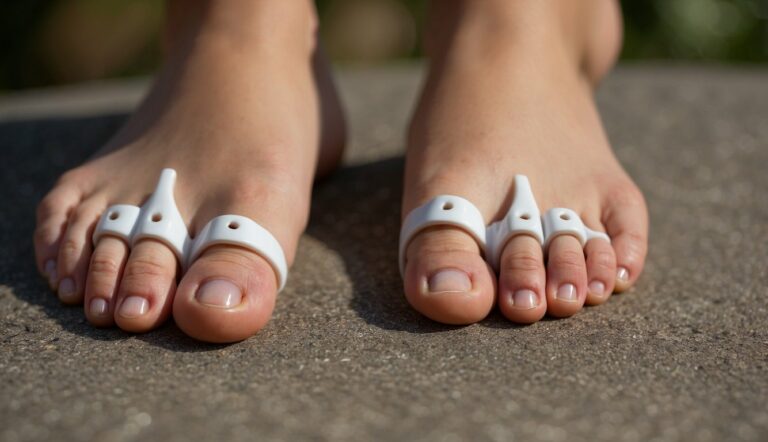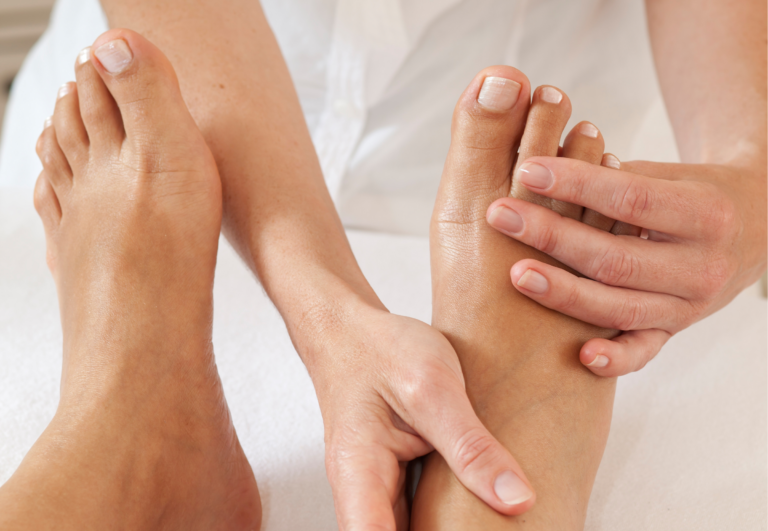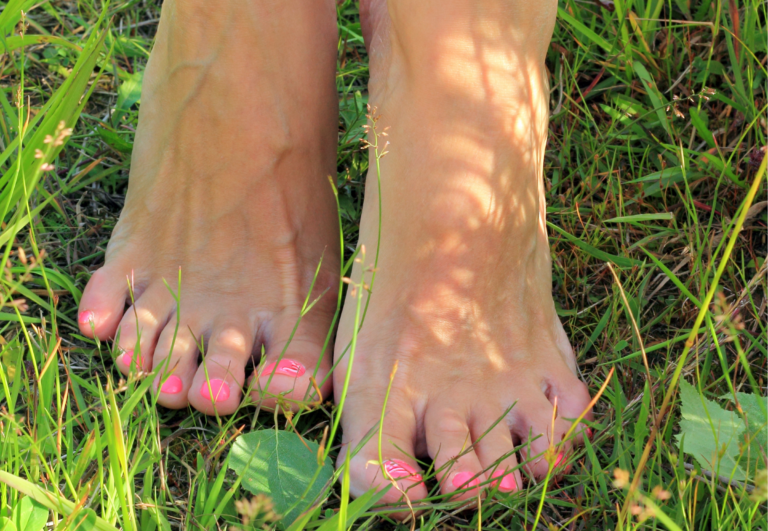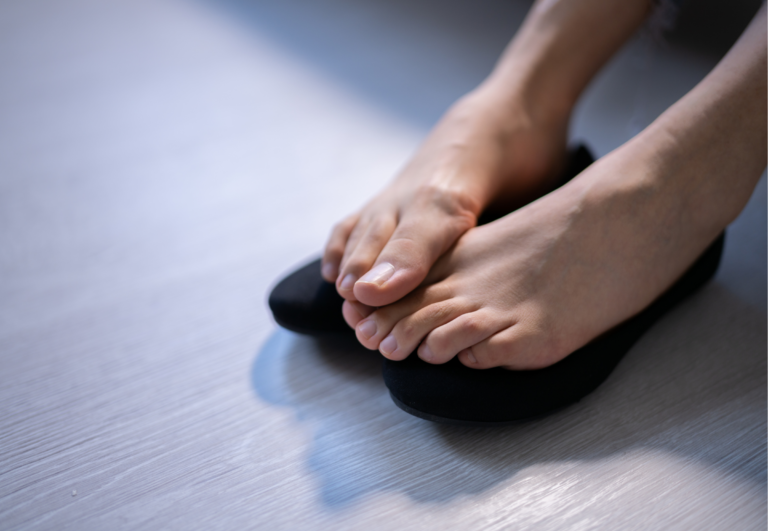Toe Strengthening Exercises with Spacers: Enhance Foot Stability and Agility
Toe spacers are gaining attention for their role in strengthening exercises that can enhance foot health and comfort. As an expert in using toe spacers—with extensive hands-on experience but not a medical doctor—I can share the benefits they offer for anyone looking to improve their toe and foot strength. By wearing toe spacers, you’re able to align your toes in their natural position, which can be an essential step toward alleviating common foot issues.
Incorporating toe spacers into your daily routine can significantly help in stretching and strengthening the intrinsic muscles of your feet. These simple devices can be a game-changer, particularly for those who spend long periods on their feet or for athletes looking to boost their performance. With regular use, you can experience an improvement in balance, posture, and overall foot mechanics, leading to a more comfortable and supportive step.
Starting with a few basic exercises can pave the way towards stronger and healthier feet. For example, while seated with your feet flat on the ground, lifting all toes and then pressing them outward against the toe spacers can enhance muscle engagement and flexibility. The key to effectiveness is consistency and gradually increasing the difficulty of exercises while paying close attention to your body’s response to ensure a safe and beneficial toe-strengthening journey.
Quick Overview of Toe Spacers
Toe spacers are devices designed to promote proper toe alignment and enhance foot health. Utilizing them is a straightforward way to maintain and improve foot function.
Benefits of Toe Spacers
I’ve found toe spacers to be instrumental in improving foot alignment, which can lead to enhanced balance and posture. Here’s a simple routine to get started:
- Insert the toe spacers between your toes gently.
- Sit comfortably with your feet flat on the ground.
- Hold for 5-10 minutes as you acclimate to the sensation.
- Gradually increase the duration as your feet adjust.
- Perform stretches such as toe splay, curls, and toe extensions while wearing them to strengthen the intrinsic muscles.
Regular use of toe spacers may also alleviate toe pain and provide a broader base of support for the body.
Types of Materials
Toe spacers can be constructed from various materials, each offering distinctive benefits:
- Silicone: Flexible and soft, adapts well to the contours of the feet.
- Gel: Provides a smooth, cushioned feel and typically has a stickier surface.
- Foam: Light and breathable, often used for shorter durations or during activities like yoga.
- Rubber: Durable and firm, offering substantial resistance for toe exercises.
Choosing the right material depends on personal comfort preferences and the intended use of the toe spacers.
Toe Spacer Selection and Usage
To optimize the benefits of toe spacers for exercises, it’s crucial to select a well-fitted pair and use them correctly. The right toe spacers can alleviate discomfort from issues like bunions and can lead to better toe alignment and improved foot posture.
Choosing the Right Toe Spacer
When I look for toe spacers, the first thing I consider is fit and comfort. Toe spacers come in various materials such as soft gel or firmer silicone and sizes to accommodate different needs. Correct Toes and The Toe Spacer 5-Loop Toe Spacer are examples of products designed for activity and all-day wear respectively. If you’re dealing with bunions or other toe deformities, choosing a pair that aligns and eases the pressure on your toes without causing pain is essential.
Before making a purchase, I always recommend speaking with a healthcare professional if you have pre-existing foot conditions, to ensure the chosen spacers will contribute positively to your foot health and not cause additional issues.
Here’s how I assess toe spacers:
- Material: Soft for comfort, silicone for durability.
- Design: Some spacers separate all toes, while others focus on the big toe. I choose based on which toes need alignment.
- Size: Proper fit is key. Too tight can worsen issues, too loose won’t offer benefits.
How to Use Toe Spacers Safely
Using toe spacers involves more than just slipping them on; there’s a safe routine to follow. Start with:
- Wash your toe spacers and dry them thoroughly.
- Insert your toes into each loop gently, ensuring they’re seated comfortably.
- Begin with a short duration, like 10-15 minutes, and observe how your toes feel.
- Gradually increase wearing time as your toes adjust; don’t rush into prolonged use.
- While wearing spacers, engage in stretches such as toe curls and extensions to strengthen the intrinsic foot muscles.
During exercises, I pay attention to my body’s signals. Discomfort is a message to adjust usage, whereas pain means I should remove the spacers and consult a healthcare professional.
I recommend a simple yet effective routine while using toe spacers:
- Spread and relax toes for 30 seconds.
- Curl toes down, hold for 30 seconds.
- Lift each toe individually, hold for five seconds each.
- Perform “toe splaying” where the toes are spread apart actively.
For those with foot posture issues, incorporating toe spacers into a regular strengthening routine can be beneficial, but always listen to your body and never ignore pain.
Exercises for Stronger Toes
I have found toe spacers to be incredibly beneficial in promoting toe strength, balance, and alignment. Using toe spacers during specific exercises can enhance flexibility, stability, and overall foot performance. Let’s dive into some effective routines.
Stretching and Flexibility
To begin improving toe flexibility and strength, use the following step-by-step routine:
- Toe Spread: Sit comfortably and insert toe spacers. Relax your feet and hold the position for 5 minutes to allow your toes to naturally spread.
- Big Toe Stretch: While seated, reach down and gently pull your big toe outward, holding for 15 seconds before releasing. Repeat 5 times on each foot.
- Toe Splay: With spacers in, try actively splaying your toes apart without using your hands. Hold the splay for 5 seconds, then relax. Perform 10 repetitions.
These exercises aid in developing the tiny muscles of your toes, improving overall toe mobility.
Strengthening and Stability Exercise
For strengthening and stability, focus on these exercises:
- Toe Curls: Place a towel on the floor and, with spacers in, use your toes to scrunch it towards you. Release and extend fully. Aim for 3 sets of 10 curls.
- Marble Pickups: Scatter marbles on the floor and, using your toes, pick them up one by one and place them into a bowl. Try for 3 sets of 10 pickups per foot.
These movements contribute to strengthening the muscles that support the arch and enhance the stability of your feet.
Balance and Coordination Training
To improve balance and coordination, implement these exercises:
- Single-Leg Stand: With spacers in, stand on one foot, focusing on keeping your balance for as long as possible. Switch to the other foot. Aim for 3 sets of 30 seconds per foot.
- Heel-Toe Walk: Walk in a straight line placing your heel directly in front of your toe. This will challenge your foot muscles and improve coordination.
Regular practice of these balance exercises can substantially increase the overall function and performance of your toes during everyday activities and athletic performance, while also helping in injury prevention.
Integrating Toe Spacers into Lifestyle
Using toe spacers can be a proactive approach to improving your feet’s health and enhancing athletic performance. Proper integration into daily life and sports activities can lead to numerous benefits such as better circulation, natural alignment, and overall performance enhancement.
Daily Wear Considerations
When starting with toe spacers, it’s crucial to give your feet time to adapt. Here’s a simple routine to ease into daily use:
- Begin with short durations: Spend a few minutes per day with the spacers on, allowing your toes to adjust.
- Gradually increase time: Slowly extend the duration you wear the spacers each day.
- Monitor your feet’s response: Pay attention to any discomfort and adjust as necessary.
Remember, the type of footwear you choose can either hinder or complement the use of toe spacers. Stick to shoes that offer enough room for your toes to spread naturally, similar to when you’re barefoot.
Sports and Athletic Performance
For athletes, incorporating toe spacers into training can be a game-changer. The benefits include improved balance, natural foot alignment, and enhanced recovery post-training. Here’s how to include them in your athletic routine:
- Start by wearing toe spacers during warm-ups to stimulate circulation.
- Include them in lower-intensity training sessions initially to build up tolerance.
- Keep wearing them during cool-down stretches to support recovery.
Ensure that your athletic footwear provides enough space for the spacers, as cramped shoes could negate the benefits. Embrace toe spacers as a part of your regimen to potentially boost your overall athletic performance.
Common Toe Conditions and Recovery

In managing toe conditions like bunions and hammertoes, recovery often involves addressing pain and correcting deformities with tools like toe spacers.
Addressing Toe Deformities and Pain
My experience has shown that toe deformities, including bunions and hammertoes, can lead to significant foot pain, strain, and discomfort. These issues often stem from improper alignment, excessive pressure on joints, and tight footwear, which can also cause corns, calluses, and plantar fasciitis. To combat these problems, a consistent routine of targeted exercises can help:
- Toe Presses: Warm up your feet by sitting with your knees bent, feet flat. Press your toes into the ground and hold for three seconds. Repeat 10 times.
- Toe Splay: With toe spacers in place, try to spread your toes apart without straining. Hold for a few seconds, then release. Repeat 10 times.
- Heel Raises: Stand with your back straight, lift your heels off the ground, and press down with your toes. Hold for two seconds. Repeat 10 times.
- Toe Curls: With a towel on the floor, use your toes to scrunch the towel towards you. Repeat this motion for one minute.
These exercises not only provide relief but they promote better alignment and strength in your toes.
Rehabilitation with Toe Spacers
Using toe spacers can be a game-changer in the rehabilitation process for toe conditions. They are non-invasive tools that work by holding the toes in the correct position, which reduces inflammation and allows for natural healing to take place.
My Routine with Toe Spacers:
- Start by wearing toe spacers for short periods, and gradually increase the duration as comfort allows.
- During wear, engage in low-impact activities like walking to accustom the toes to their new alignment.
- Combine toe spacer use with the above exercises to maximize benefits.
If symptoms persist, it is important to consult a healthcare provider for a personalized recovery plan. As an experienced user of toe spacers, I’ve found that they can play a vital role in managing foot pain and toe deformities, but they are not a substitute for professional medical advice.





